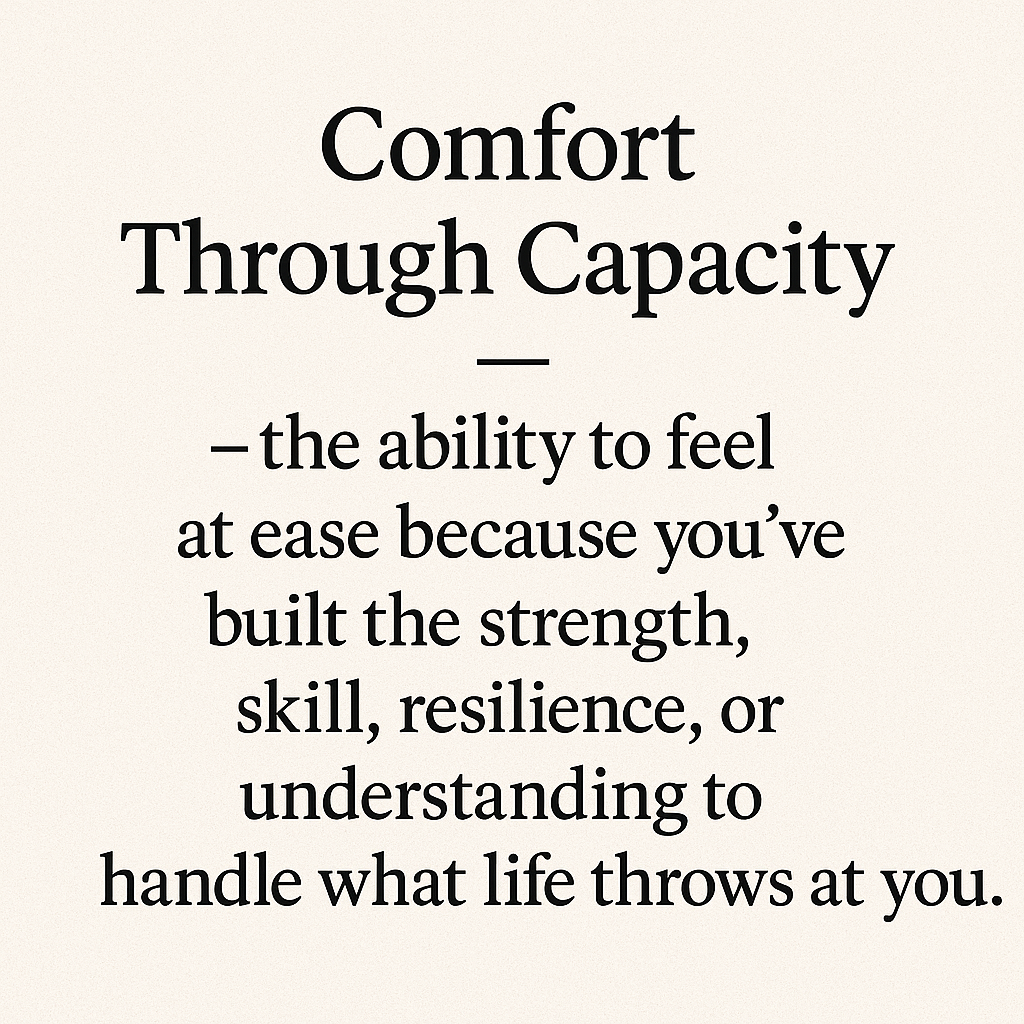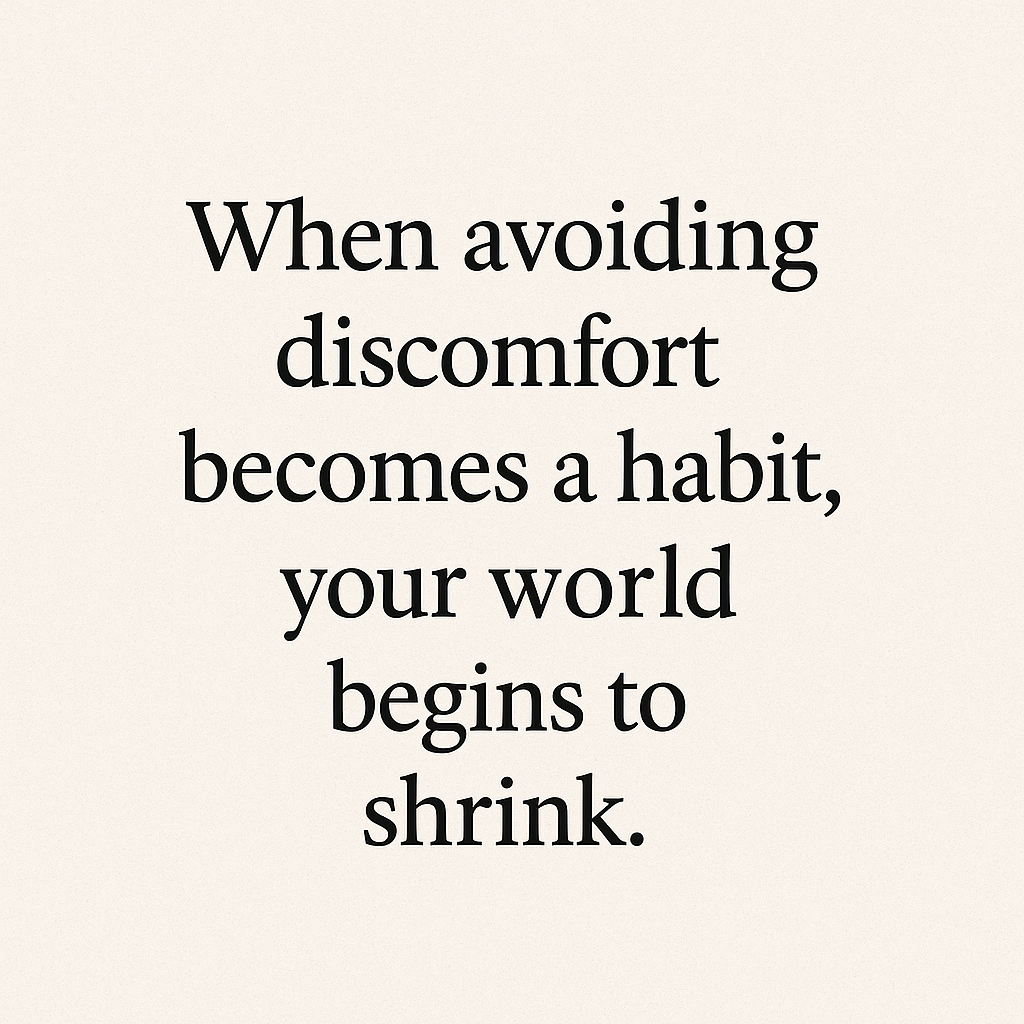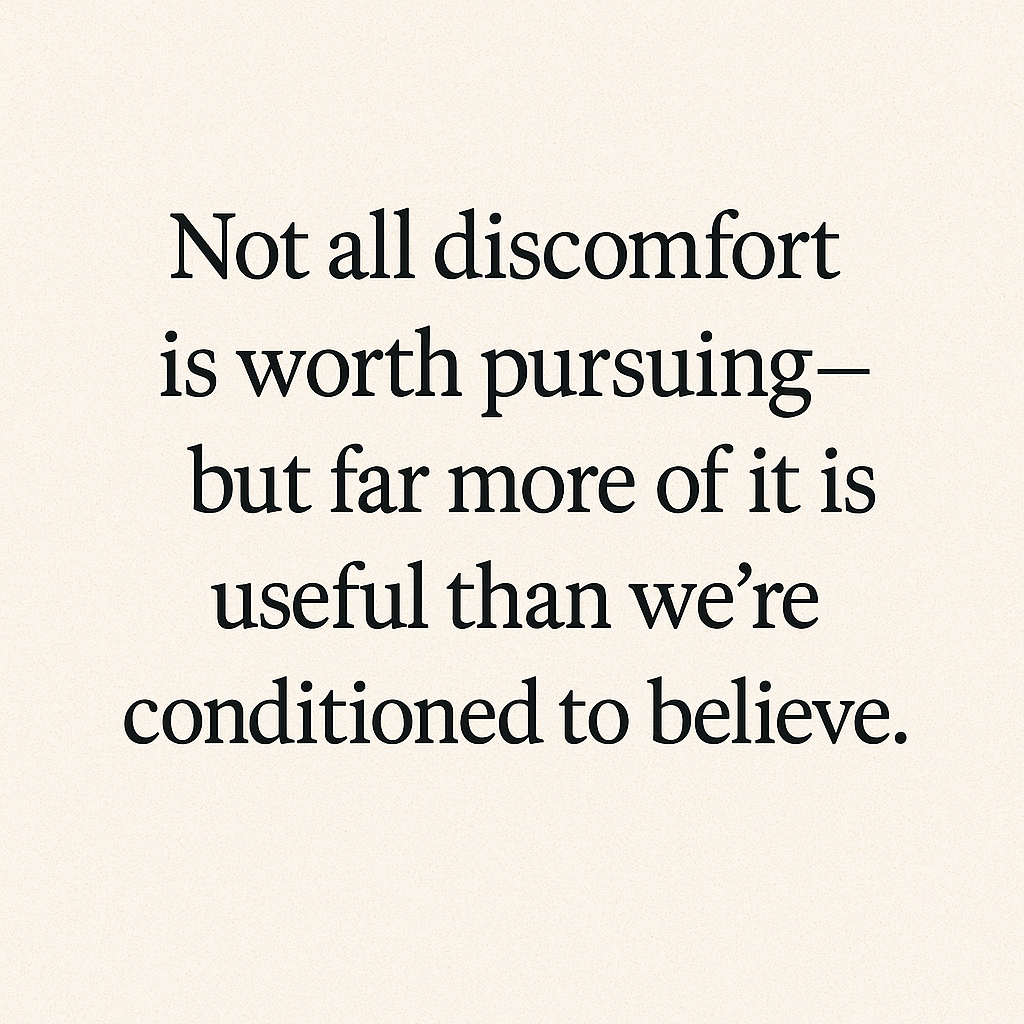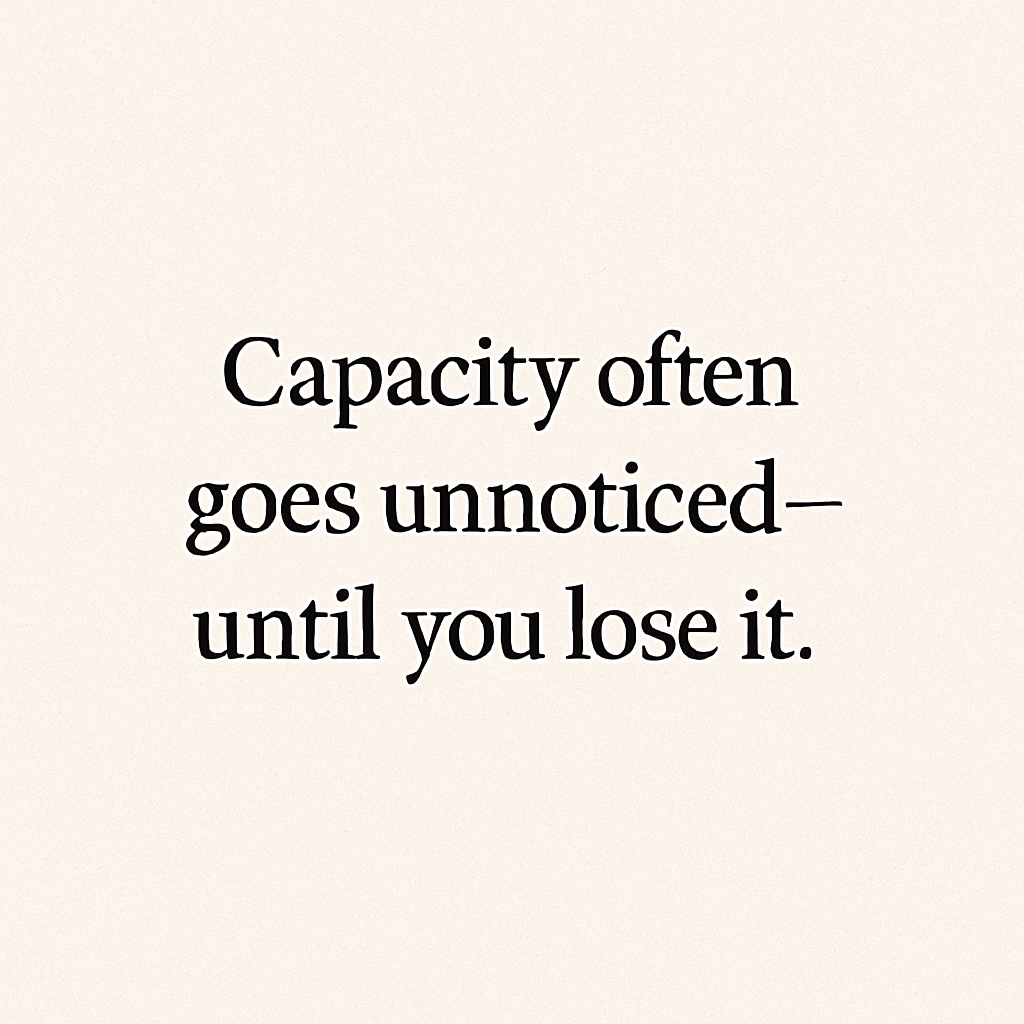We live in a world that prizes comfort. From ergonomic chairs to food delivery apps, temperature-controlled environments to on-demand entertainment, modern life is engineered to minimize friction. And while this can be convenient, it also sets a subtle trap—one where we begin to equate comfort with well-being and avoidance of discomfort with wisdom.
But here’s the paradox: the more we pursue comfort in the moment, the more uncomfortable our lives can become in the long term. And inversely, the more we’re willing to lean into discomfort intentionally, the more comfort and freedom we create for ourselves over time. This is the Comfort Paradox.
Introducing the Comfort Continuum
To make sense of this, let’s look at what I call the Comfort Continuum.
On one end of the spectrum is Comfort in the Moment—the impulse to feel good now, to avoid pain, to stay in familiar territory, and to minimize effort.
On the other end is Comfort Through Capacity—the ability to feel at ease because you’ve built the strength, skill, resilience, or understanding to handle what life throws at you.
These two types of comfort are not the same. In fact, they often compete with each other.
Comfort in the moment is visible, immediate, and gratifying.
Comfort through capacity is invisible, delayed, and often earned through discomfort.
The key insight? You can’t build comfort through capacity without experiencing discomfort.
The Cost of Chasing Comfort in the Moment
Choosing momentary comfort might feel smart in the short term: resting when you’re tired, avoiding confrontation, skipping the hard workout, taking the escalator instead of the stairs. None of these are inherently bad choices. But over time, when avoiding discomfort becomes a habit, your world begins to shrink.
Pain gets worse. Movement becomes harder. Confidence erodes.
Eventually, the most basic tasks—getting up off the floor, climbing stairs, carrying groceries—start to feel like major obstacles. That’s because comfort in the moment doesn’t build anything. It’s a withdrawal, not a deposit. And when life inevitably demands something of you—be it physical, emotional, or mental—you discover that you haven’t built the capacity to meet it.
That’s the moment when the lack of capacity becomes visible.
You might not notice strength or resilience when someone has it. But you always notice when they don’t.
What Is Comfort Through Capacity?
Comfort through capacity is subtle and slow-building. It’s earned through consistent, often invisible effort.
It’s not about being constantly uncomfortable or grinding yourself into the ground. Rather, it’s about choosing challenges that stretch you—physically, mentally, emotionally—just beyond what’s easy.
It’s pushing through the last reps of a workout.
It’s learning a new skill and enduring the awkwardness of being a beginner.
It’s having the hard conversation instead of staying quiet.
It’s waking up early for a walk instead of sleeping in every day.
Each of these moments, while uncomfortable, deposits something into your long-term capacity bank. Over time, this builds a body that moves well, a mind that doesn’t panic under pressure, and a life that feels more capable.
This is comfort in its truest sense—not freedom from discomfort, but freedom within it.
The Illusion of Effortless Ease
One of the biggest lies modern culture sells us is that ease should come effortlessly. But that’s not how nature works. Trees grow stronger through wind and pressure. Muscles only develop through resistance. Immune systems are forged through exposure.
Humans are no different. Our capacity for comfort is directly proportional to our willingness to be uncomfortable by choice.
Want to be able to run without pain? You have to train.
Want to lift your kids without tweaking your back? You need strength.
Want to focus deeply on work? You need to practice delaying gratification.
Want to age with grace and capability? You need to move—often and with intention.
Ease is a product of effort, not the absence of it.
Discomfort as a Signal, Not a Stop Sign
Discomfort isn’t something to fear. It’s information. It tells you where you’re growing, what you’re avoiding, and where the edges of your current capacity lie.
The trick is distinguishing between productive discomfort and destructive pain. Not all discomfort is worth pursuing—but far more of it is useful than we’re conditioned to believe.
In a training context, discomfort is where adaptation happens. The muscle burns a little, the breath gets heavy, coordination is challenged—and the body says, “Ah, we need to get better at this.”
Avoid that signal often enough, and the body assumes it doesn’t need to be ready for much.
Capacity Is Invisible—Until It Isn’t
Capacity doesn’t show up on a scale or in a mirror. It doesn’t come with instant gratification. But it makes everything easier—getting out of a chair, chasing your kids, walking all day in a new city, returning to work after injury.
Capacity often goes unnoticed—until you lose it.
This is why so many people don’t train for capacity until a crisis forces them to. Pain, injury, illness, or limitation jolts them into action. But by then, you’re playing catch-up.
What if, instead, we lived with the awareness that capacity is always being built—or lost?
What if we treated discomfort not as something to avoid but as a tool to increase the range of what we can do with ease?
Building Comfort Through Capacity: A Simple Framework
Here are a few ways to live more toward the “capacity” end of the continuum:
Choose friction on purpose: Take the stairs, carry your groceries, walk instead of drive. These small decisions compound.
Train what you want to keep: Strength, mobility, endurance, coordination—all of it decays without use. Use it or lose it.
Seek unfamiliarity: Try something new. The act of learning keeps your nervous system agile and your confidence sharp.
Practice patience: Capacity builds slowly. Set goals based on what you want to be able to do, not how you want to look or feel this week.
Reflect on your defaults: When you’re uncomfortable, what’s your instinct—avoid or adapt? That answer tells you where your edge is.
The Bottom Line
Comfort is not the enemy. But mistaking immediate ease for lasting peace is a trap. True comfort isn’t found by avoiding stressors—it’s built by gradually increasing your ability to handle them.
That’s the Comfort Paradox: the more you're willing to endure strategic discomfort now, the more you create a life where discomfort doesn’t control you later.
So choose your discomfort wisely. It’s not punishment—it’s preparation.






